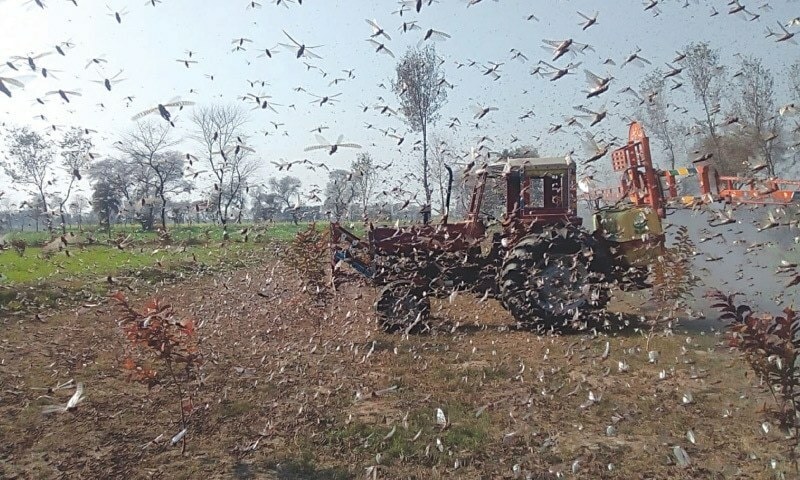ISLAMABAD: Results of a joint survey carried out after a gap of two years in spring breeding areas of the desert locust in Pakistan and Iran have found that locust infestation rate was extremely low in this year’s survey – an average of 1.4pc compared to 60pc for the last joint survey in 2019.
In Pakistan, the percentage in 2022 is 1.4pc as compared to 34pc in 2019, according to the report on desert locust joint survey, released by the Food and Agriculture Organisation (FAO) of the United Nations, on Wednesday.
The results of the joint survey indicate that this year’s spring breeding was exceedingly limited due to unusually poor rainfall and unfavourable ecological conditions.
Consequently, there is absolutely no threat to the summer breeding areas along the Indo-Pakistan border this year, and the situation should remain calm throughout the region for the remainder of the year.
The Pakistan locust survey team surveyed a total of 291 stops along a route of 7,665kms in Balochistan and checked an estimated area of 59,320 hectares, while in Iran, 192 stops were surveyed along a route of 9,328kms and checked an estimated area of 10,320 hectares.
Thus, a total of 483 stops were surveyed on the ground along 16,993kms, checking an estimated total area of 70,200 hectares on both sides of the border.
The FAO report says ecological conditions were not found to be suitable for locust activity in either country. Only low numbers of solitarious adults and a few solitarious hoppers were observed in five places along the coast in southeast Iran and four places in southwest Pakistan. As the conditions were dry, a greater distance and higher number of stops could be achieved during this year’s survey compared to previous joint surveys, report says.
In Pakistan, vegetation and soil moisture were found to be dry at all survey stops. Low density immature and mature solitarious adults were seen at four localities in the areas of Jiwani and Kolanch Valley.
Low-density solitarious and transiens hoppers were observed at one locality. Low density solitarious hoppers and fledgings were also seen in Kocho areas (Kolanch Valley).
The fact that there were a few late instar hoppers present in Jiwani and Kolanch Valley suggest that there must have been some rainfall in January or early February to allow for egg-laying to take place from the last week of February to mid-March.
As a result of this egg-laying, hatching most likely began in the second week of March and continued until the end of the month.
Published in Dawn, May 12th, 2022














































Dear visitor, the comments section is undergoing an overhaul and will return soon.